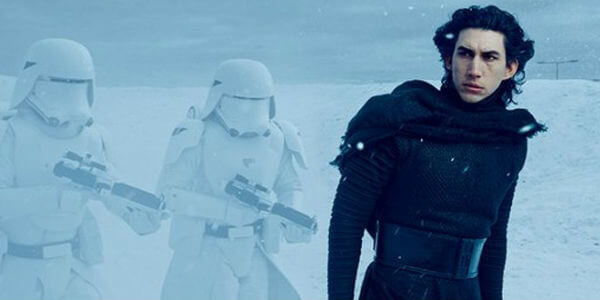#MovieFailMondays: The Force Awakens (or, How Movies Can Teach You About Logical Fallacies and Help You Ace the LSAT)
 Each week, we analyze a movie that illustrates a logical fallacy you’ll find on the LSAT. Who said Netflix can’t help you study? 🎥📖
Each week, we analyze a movie that illustrates a logical fallacy you’ll find on the LSAT. Who said Netflix can’t help you study? 🎥📖
Spoilers, there will be. Forewarned, you have been.
Young Padawans, we’re finally here – the final installment (for a few years, at least) of the #MovieFailMondays Star Wars series. And I’m about to make a bold statement:
If you didn’t like The Force Awakens, you’re committing all the logical fallacies. In short, you’re wrong.
Were there problems with it? Definitely. Were they outweighed by the good things? Definitely.
For #MFM, however, I want to deal with one specific criticism that keeps cropping up – that The Force Awakens is a carbon copy of A New Hope.
Everyone’s seen the memes. Everyone’s read the reviews stating this. Everyone’s experienced the Facebook rants of friends.
And I’m here to tell you that they’re all falling prey to a comparison fallacy.
Are there similarities? Sure. But we share 60% of our DNA with banana plants. Pick two random things, and they’re similar in some ways.
One flavor of comparison fallacy is when an argument points out one or two similarities between things, and then assumes that all of the relevant features are similar (or the same). Going down this route can lead you to think that a komodo dragon is just as good a pet as a dog since they both have four legs and eat meat!
TFA and ANH share many plot points. Each one, however, features a great inversion that allows for the theme of the new series to shine through, and the legacy of Star Wars to be addressed but moved past.

SPOILER ALERT: Read on at your own risk.
Take, for example, the climactic scene between Kylo Ren and Han Solo. This scene is obviously meant to mirror the Bespin scene where Luke first learns that Vader is his father, from The Empire Strikes Back, down to the thin walkway the two are standing on.

What’s old is new again in Star Wars Episode VII: The Force Awakens.
However, there are some important differences. First, Kylo’s lineage isn’t a shock – it’s established earlier on that he’s the son of Han and Leia. This makes the scene serve a completely different emotional role in the movie compared to the Original Trilogy. Second, the roles are reversed – the good guy is the father; the bad guy is the son. The subtext of the scene is palpable as Kylo’s answer to Han’s question shows that neither understands what the other is going through, and both are unsure of their role in the other’s life. This reversal is also important for similarity – the Sith walks off the platform, while the hero falls. This creates a parallel between Han and Luke; and Kylo and Vader. An important one, showcasing the inverted plotline through which this new trilogy is going to go through.
There are many other parallels that are inverted in this scene; there are many other beautiful inversions throughout the similar scenes in the film. But the subtext couldn’t exist if J.J. Abrams and Lawrence Kasdan didn’t create a plot that mirrored that of the Original Trilogy. The scenes are similar; it’s their differences that make them meaningful.
Except Starkiller Base. They should have come up with something better than that. 📝
 Matt Shinners is a Manhattan Prep instructor based in New York City. After receiving a science degree from Boston College, Matt scored a 180 on his LSAT and enrolled in Harvard Law School. There’s nothing that makes him happier than seeing his students receive the scores they want to get into the schools of their choice. Check out Matt’s upcoming LSAT courses here!
Matt Shinners is a Manhattan Prep instructor based in New York City. After receiving a science degree from Boston College, Matt scored a 180 on his LSAT and enrolled in Harvard Law School. There’s nothing that makes him happier than seeing his students receive the scores they want to get into the schools of their choice. Check out Matt’s upcoming LSAT courses here!